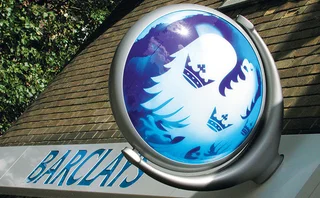

New settlement cycle grants NSCC members clearing fund relief
The move to a shorter settlement cycle for US equities, introduced in September 2017, has spared members of the National Securities Clearing Corporation (NSCC) hundreds of millions in mandatory default fund contributions.
US equities markets moved from a T+3 to a T+2 settlement cycle on September 5, 2017. NSCC, a clearing service within the Depository Trust & Clearing Corporation (DTCC), says
Only users who have a paid subscription or are part of a corporate subscription are able to print or copy content.
To access these options, along with all other subscription benefits, please contact info@risk.net or view our subscription options here: http://subscriptions.risk.net/subscribe
You are currently unable to print this content. Please contact info@risk.net to find out more.
You are currently unable to copy this content. Please contact info@risk.net to find out more.
Copyright Infopro Digital Limited. All rights reserved.
As outlined in our terms and conditions, https://www.infopro-digital.com/terms-and-conditions/subscriptions/ (point 2.4), printing is limited to a single copy.
If you would like to purchase additional rights please email info@risk.net
Copyright Infopro Digital Limited. All rights reserved.
You may share this content using our article tools. As outlined in our terms and conditions, https://www.infopro-digital.com/terms-and-conditions/subscriptions/ (clause 2.4), an Authorised User may only make one copy of the materials for their own personal use. You must also comply with the restrictions in clause 2.5.
If you would like to purchase additional rights please email info@risk.net
More on Risk Quantum
Barclays Capital F&O funds jump past $20bn, narrowing gap with Citi
Customer and total funds rose in early November as most FCMs reported declines
Equity VAR hovering near four-year high at US banks
Gauges of stock market risk rise 36% in just one year
JPM stands alone as substitutability cap reins in G-Sib score
Bank of America crosses 500bp threshold for first time, as Basel continues review
US G-Sibs post record secured finance flows in LCR
Q3 spike continues long-term shift toward secured funding and lending in liquidity stress scenario
JP Morgan attracts bigger add-on from Fed’s G-Sib scoring
Methodological divergence with Basel Committee results in double the surcharge
US G-Sibs diverge on cashflow volatility
Maturity mismatch add-on hits peak at two banks and trough at two others
Bank of America leaps to fourth on global OTC derivatives ranking
Bank overtakes BNP Paribas, Morgan Stanley, Goldman and Citi with €8.3 trillion expansion in 2024
All 14 G-Sib indicators hit records in 2024
Aggregate measures of systemic importance for top banks jumped to new highs, driven by sharp rises in underwriting activity and securities trading volumes







